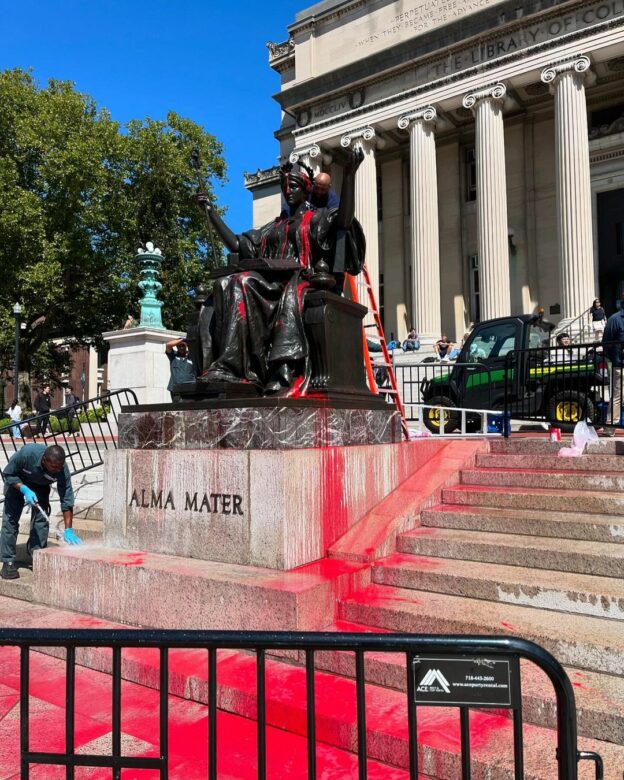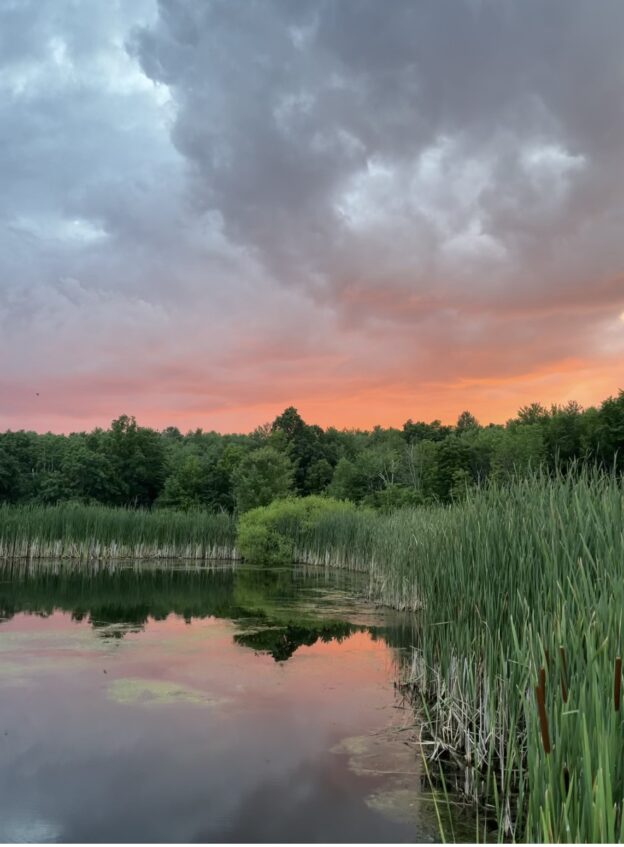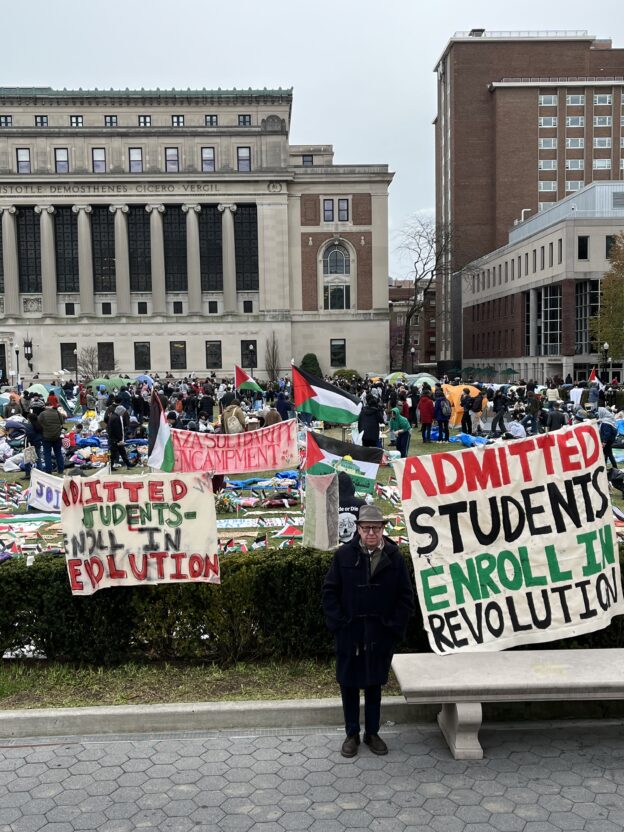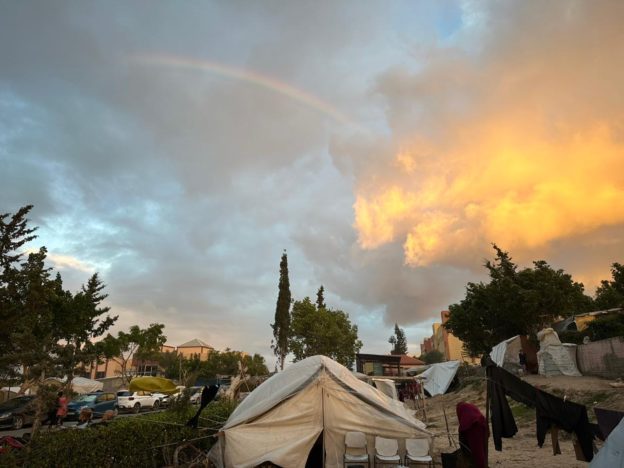No Business As Usual

On the first day of classes at Columbia yesterday, some students poured red paint over the Alma Mater statue in the Quad as an opening salvo. My photo of the bloodied statue, a symbol that there would be no business as usual on the campus as the U.S. sponsored assault on Gaza continued, went viral on X.
I am in touch almost daily with my mentees in and from Gaza, so I hear their firsthand accounts of what they and their families are living. You can read their work: Sahar Rabah has two poems in The Markaz Review, and We Are Not Numbers posted Nadera Mushtha’s essay about the destruction of her family’s olive grove.
As this genocide grinds into its twelfth month, my young friends sound increasingly despairing. The driving rain over the weekend flooded tents, destroying people’s belongings and raising the specter of waterborne diseases. Every week someone loses another family friend, a cousin, or a former professor to an Israeli bombing attack in a civilian area. As another young person I know put it, “There are no humanitarian areas in Gaza; every corner is soaked in blood.”
In addition to my work with We Are Not Numbers, I have been volunteering with the Gaza Scholarship Initiative for Displaced Students, which is helping to find spots in U.S. and European institution of higher learning for undergraduate and graduate students whose universities have been destroyed. Some of these students, the ones who managed to exit Gaza before the Rafah crossing was wrecked and sealed, are already on U.S. campuses. Some of them are still trapped in Gaza, their universities having deferred their admissions to the Spring semester. Sahar is one of these students; she should be at Rutgers in the MFA Program in Creative Writing right now, and the hope is that she will be able to get to Cairo as soon as the border opens so she can fly to the U.S. in December for a January start in Newark.
When will the genocide stop? When will the border open? And how can we speak of Gaza without mentioning the horrors currently going on in the West Bank, as Israeli politicians threaten to turn it into a “mini-Gaza”?
I heard a former Israeli hostage negotiator named Gershon Baskin on Democracy Now this morning talking about how to come to a deal to end the carnage in Gaza, and he said, “…it will take extreme American pressure on Netanyahu to make a deal. And the Americans have the pressure, if they were to choose to use it.”
Vice-President and presidential contender Kamala Harris claimed that she was heartbroken over the scale of the suffering in Gaza; she claimed that the Biden Administration has been working around the clock for months to get a ceasefire deal. As Palestinian-American poet, novelist, and psychologist Hala Alyan put it in her recent New York Times Op-Ed,
I appreciate Ms. Harris’s broken heart. What I’d appreciate more is a direct naming of who is killing and starving Palestinians, acts that are neither inevitable nor without a perpetrator. I’d appreciate the upholding of international law through sanctions and an arms embargo.
Tell the Biden Administration and Congress to Stop Arming Israel.
Yours in struggle,
Nancy K
P.S.
Red Hen Press, which is celebrating its 30th Anniversary this year and will be publishing my new novel in April 2025, received a great writeup in Publishers Weekly.
I wanted to share this brilliant and moving piece, entitled “Gloves On,” by Anne Carson about “the black doorway” and living with Parkinson’s Disease.
September 4, 2024











